Piano notes are the ABCs of piano learning. Be it practicing chords, scales or playing a song; it's impossible to play the piano without knowing the notes.
But, what are piano notes exactly? Are these musical notation in sheet music? Or the black and white piano keys? Keep reading this piano notes guide to find out.
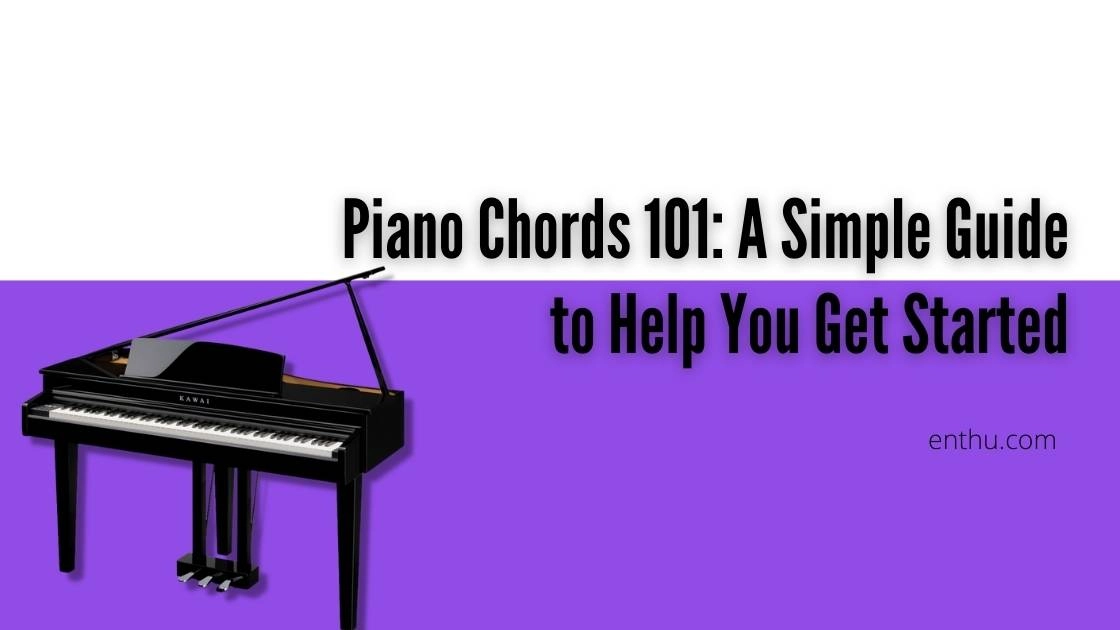
What is a NOTE in music?
Definition A note is a symbol that denotes a particular musical sound.
In Western music theory, there are a total of 12 notes, represented with the first seven letters of the English alphabet: A, B, C, D, E, F, G. The notes are in this order:
C C sharp/D flat D D sharp/E flat E F F sharp/G flat G G sharp/A flat A A sharp/B flat B Please remember that the notes remain the same no matter what you're learning.
In other words, you will find the same 12 notes in piano, ukulele, and guitar learning. In sheet music, a note is represented with the following symbol.
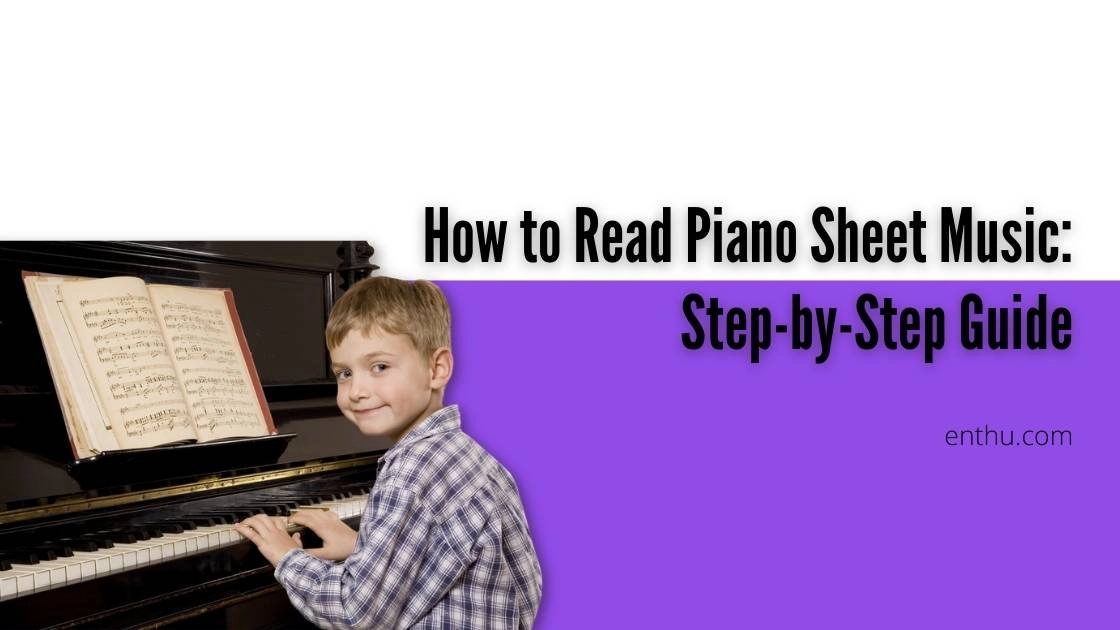
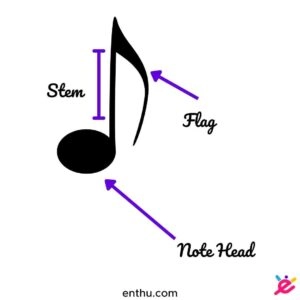
A note and its parts.
1. Difference between Piano Notes & Keys
Piano Keys | Piano Notes |
Keys are the physical, black & white buttons on a piano | A note is a sound you get when pressing a piano key |
You can touch piano keys | You can't touch piano notes but only hear |
The total number of keys can be 88, 72, 66, or 49 depending on the type of piano | There are only 12 notes in every type of piano |
There are multiple keys that produce the same note | The same note can have different pitch |
2. Relationship Between Piano Notes & Keys
In piano learning, piano notes & keys are correlated. Piano keys are placed on a piano in a 12-note pattern. As you've read above, there are 12 notes and they're always in a particular pattern.
For instance, if you're looking at an 88-keys piano, you'll see the 12 notes repeating almost 7 times in octaves.

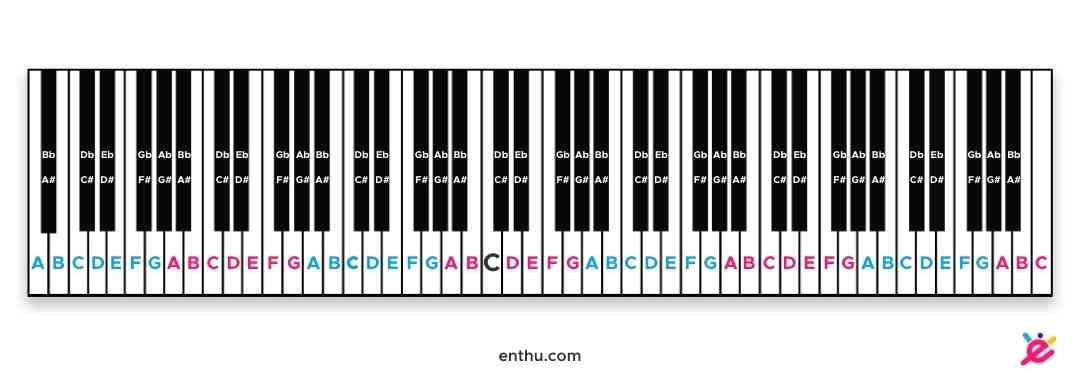
Sharp & Flat Notes | Enharmonic Tone
1. What are Sharp & Flat Notes on Piano?
To learn about it, you must first know what natural notes are.
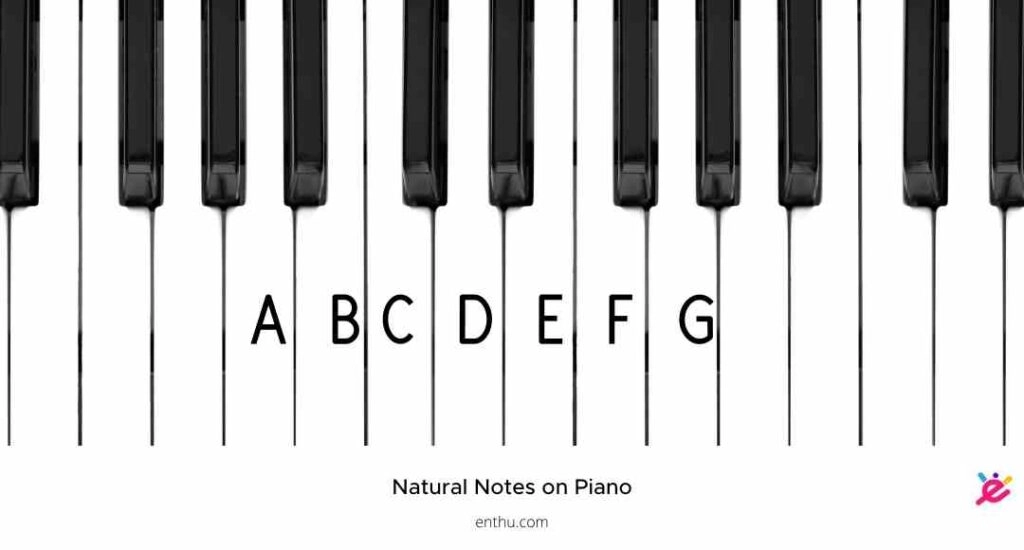
A, B, C, D, E, F, G are called the natural notes. These keys are represented by white keys on a keyboard/piano. Contrary to the white keys, the black keys are either sharps (#) or flats (b.)
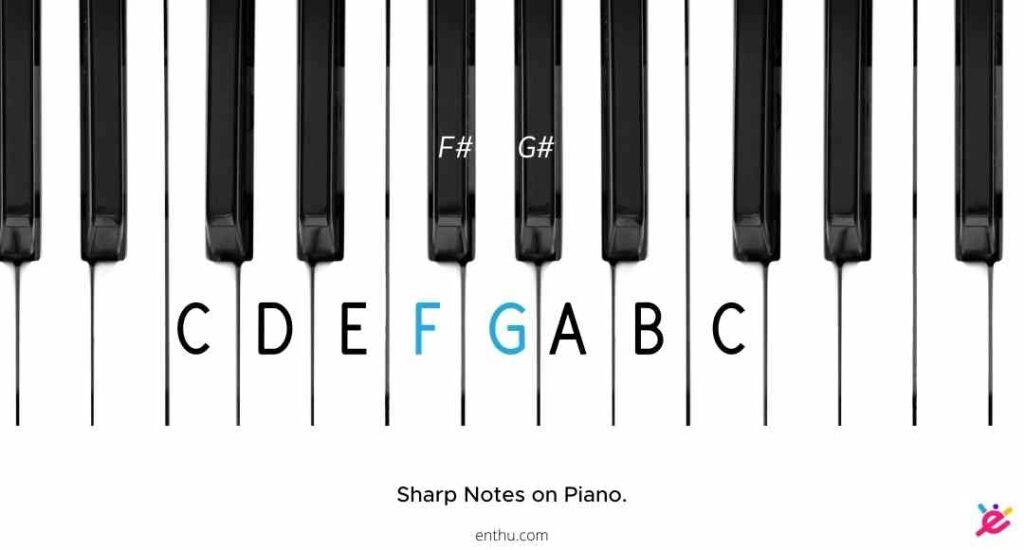
The black keys to the right of the natural notes are the sharp of that key. For example, the black key on the right of the F note is F-sharp. Similarly, the black key on the right of the G note is G-sharp.

The black keys to the left of the natural notes are the flat of that key. The black keys on the left of the G-note and A-note are G-flat and A-flat respectively.
2. What is Enharmonic Tone on Piano?
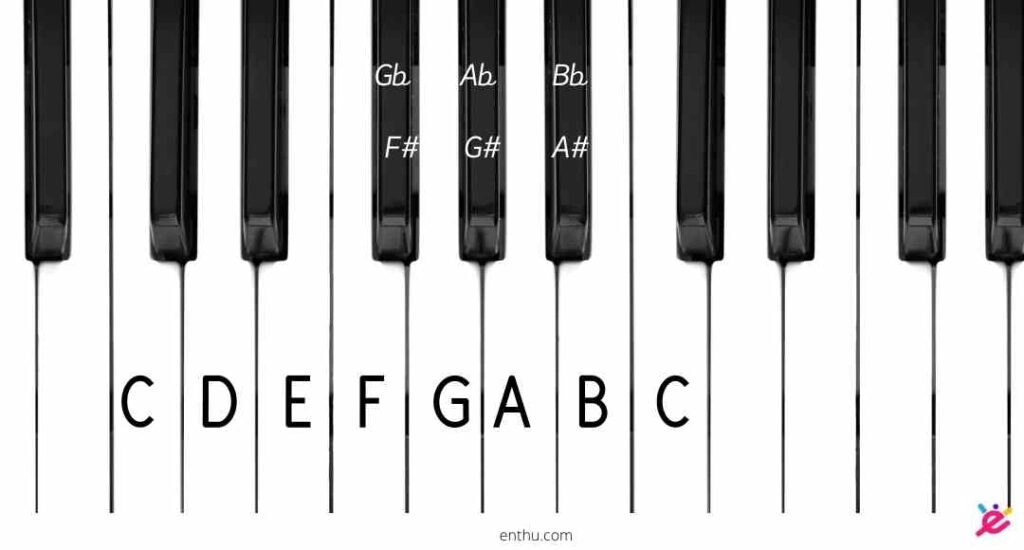

Take a look at the above picture. The black key to the right of the G-note is both G-sharp and A-flat. Same is the case for the other two black keys. What's common in these keys? They all have two names.
These keys that have different purposes and names are called Enharmonic keys. Enharmonic keys are those keys that represent two different notes but have the same sound.
Enharmonic keys can be written in two different ways on sheet music.
3. What is Key Signature?
A key signature is an indication of a particular key a music is written in. It is represented with a symbol on the grand staff. To be more specific, key signatures are represented by using accidental or enharmonic keys (sharps and flats).
Although, the key signature of C major is an ‘all-whites’ among countless key signatures. When you are playing F major, every B note drops to B♭, and in D major, F and C are raised to F# and C#.
Note Lengths Note
lengths are identified with ‘flags’. For example, every eighth note comes with a ‘flag’, which cuts the length of a quarter note in half.
Similarly, sixteenth notes are marked with two flags, cutting them in exact half as well. To make the stave look clean, consecutive eighth or sixteenth notes are joined together with extended flags.
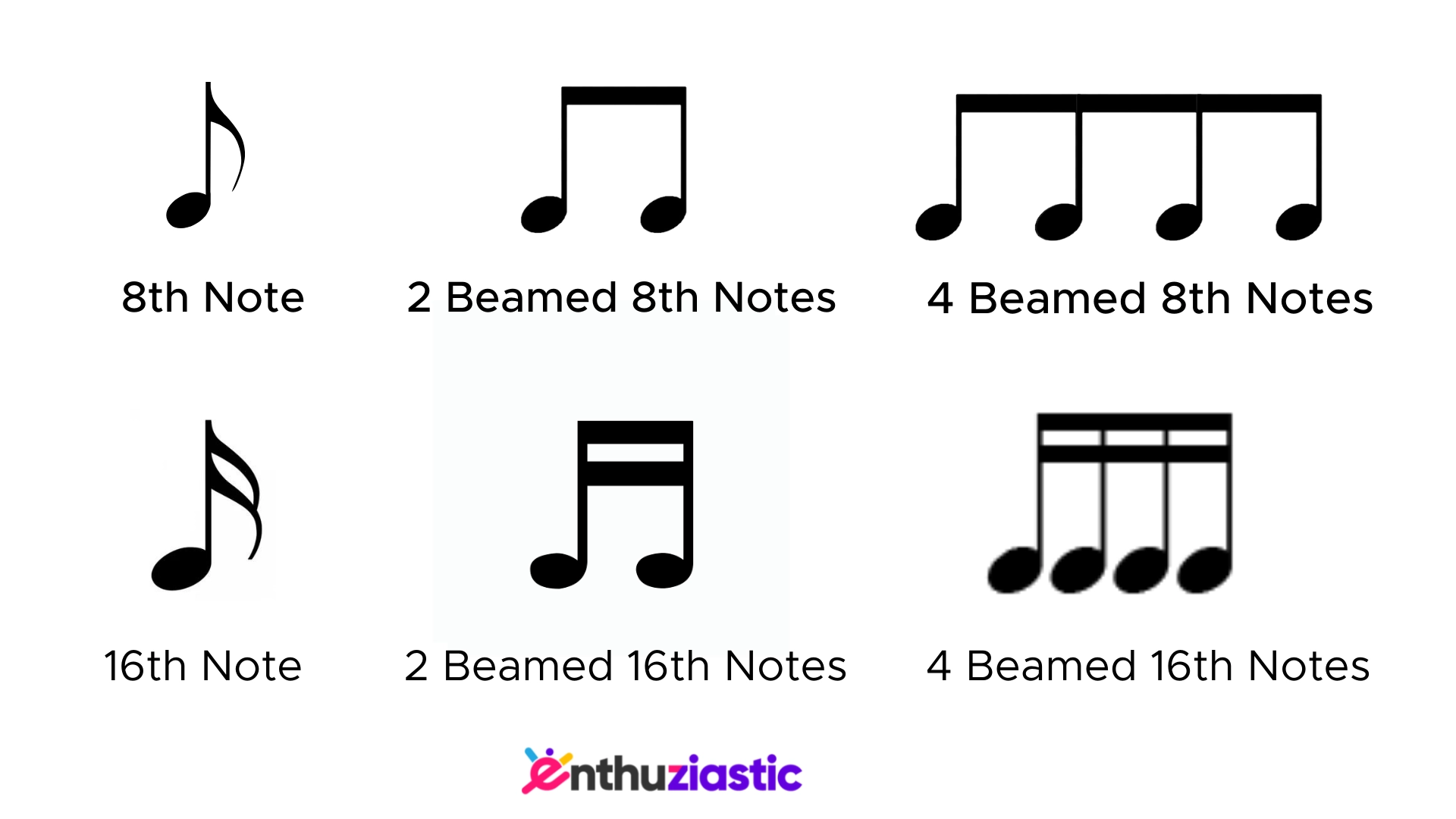
Rests on Sheet Music
Simply put, the gap between two notes is called rest, where you play nothing. Although it may sound like holding a note for a while, it is fundamentally different.
So, a consecutive half note sounds different from a series of quarter notes with quarter rest marks in between. Just like the notes, quarter, half, eighth, and whole rests have different identification symbols.
Each rest mark has the same number of flags as the note symbol. Eighth rest has one flag, sixteenth has two, and thirty-second has three, etc. Read:
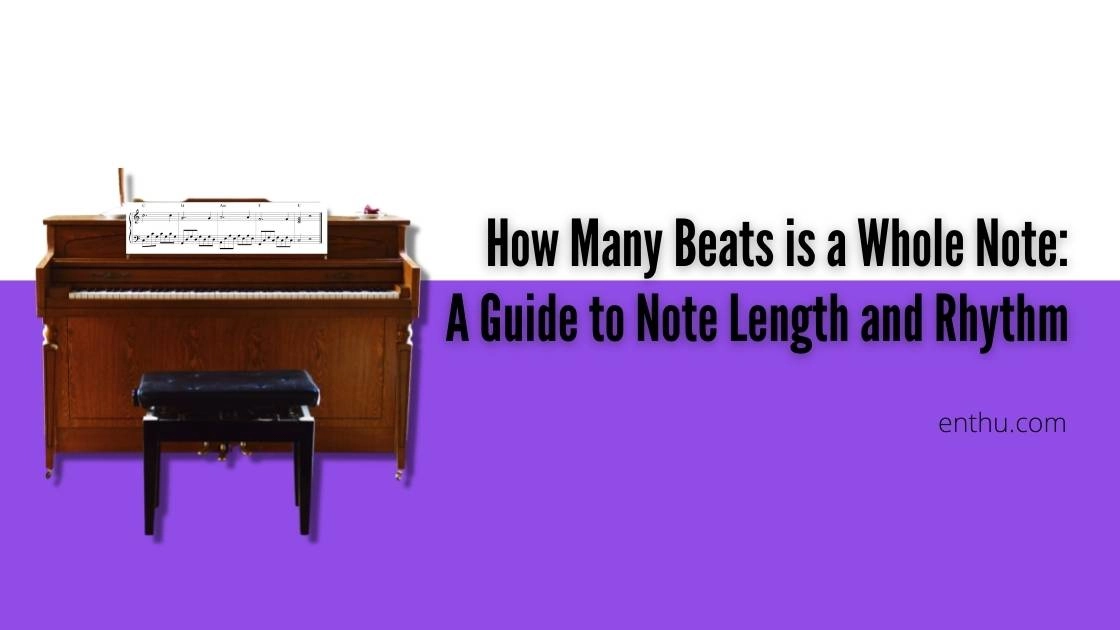
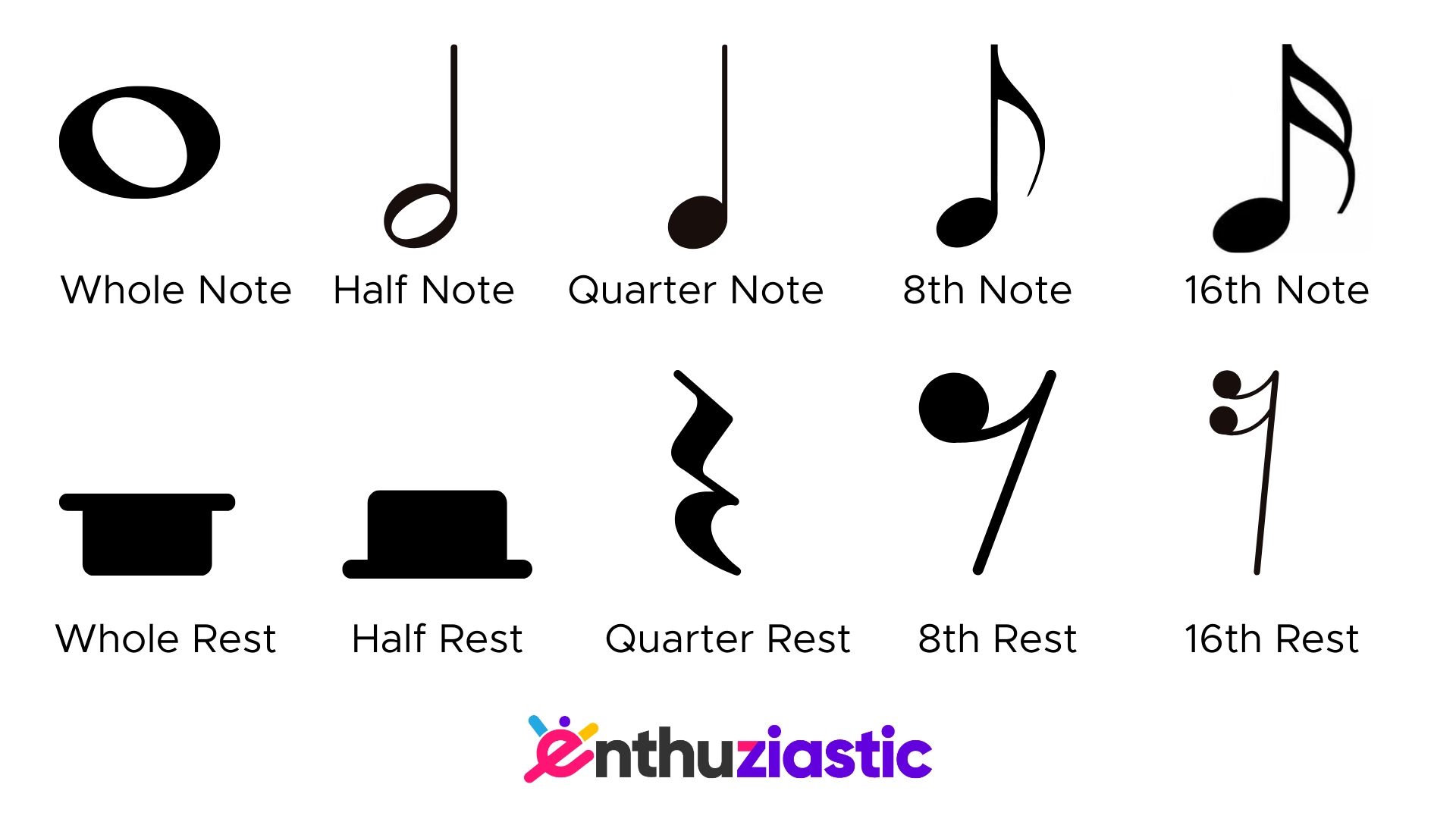
1. How to Count Notes?
Counting the notes properly is an essential tool for playing a song correctly. If you have ever seen a musician counting 1, 2, 3… before starting to play, you have a general idea about timing.
Counting helps immensely in sight reading and playing a musical piece without looking at the sheet every time you play a note.
First of all, look for the time signature in the staff to figure out how long a note will be and how many counts are in a measure.
Suppose, the time signature is 4/4 (4 quarters), then you have to count 1, 2, 3, 4, and you start playing the first note.
Read: All about 2/2 time signature (cut time) The counts can be split by adding ‘and’ while counting (For example, 1 and 2 and 3…) for shorter subdivisions. It is mostly used for counting dotted or tied notes.


Tips to Remember Piano Notes
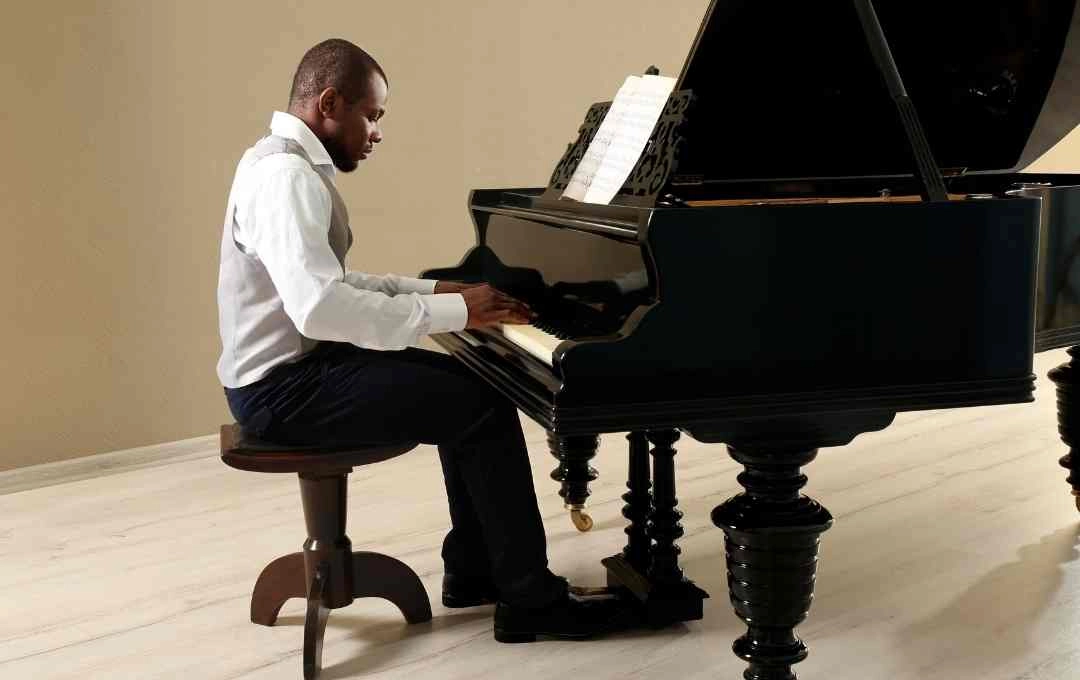
You don't read every letter specifically from a word while reading something, right? That is the goal for reading sheet music.
It should be natural and fluent. Here are a few tips to remember piano notes better and faster.
1. Reading Tips
The goal is to become fluent. So, when you can distinguish and read single notes from a sheet, you should push yourself to read 3-4 notes at once in the group, just like a word.
It will help you immensely while playing quarter note, half note, and whole note.
2. Pattern Recognition
Start by picking easy songs with simple compositions. If you notice the sheet, you will easily understand a pattern of notes. The notes either go up (ascend) or down (descent).
Follow the pattern and practice till you become fluent. Once you get hold of an easy song, try a difficult one. Read:

3. Learning by the Ear
Learning to play the piano by ear is essential to making your base strong. This skill is as important as learning to read sheet music. Sit by the piano, listen to a song and memorize it.
Then start by recognizing the keynote of the song. Once you get the right note, you can use the landmark keys to identify all the notes in the song.
Honestly, this is an acquired skill, so you have to be patient and practice regularly to get better.
Methods to Remember Piano Notes
There are several methods of remembering piano notes. However, piano teachers around the world use three popular methods to help beginners remember piano notes.
Most Popular Methods to Remember Piano Notes
Landmark notes
Note recognition
Interval recognition
1. Landmark Notes
Recognizing landmark notes is the most popular method of remembering notes. It is simple and smart. You don't have to remember all the notes on the piano. You have to remember a few recognizable notes on each stave. The most important part is to identify the middle C.
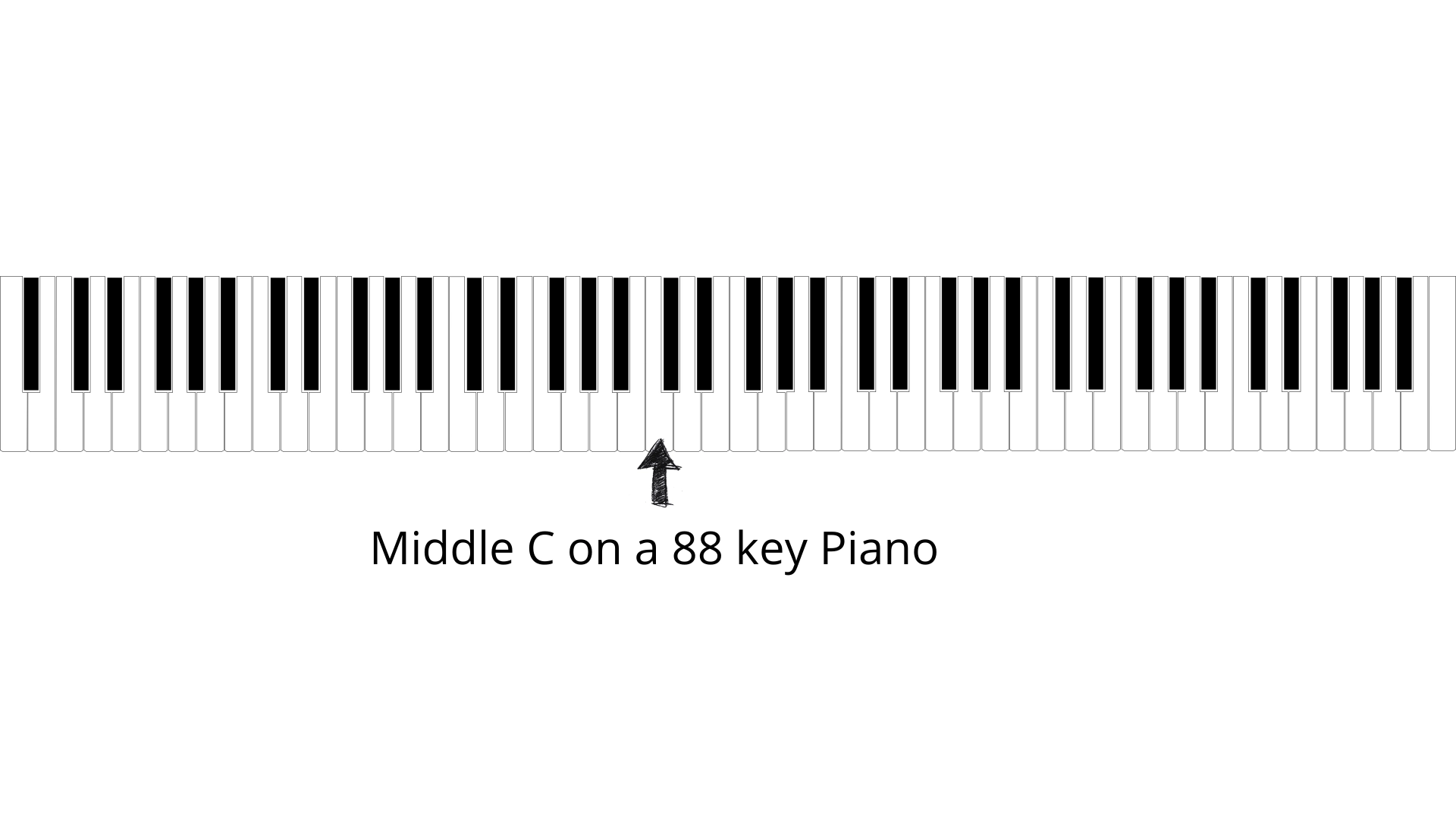
Middle C on 88-Key Piano[/caption] Once you can recognize the G, C, and F notes on octaves, you can easily read the other notes surrounding them easily.
Middle C is the first note a beginner learns to pick out on a piano. It may sound difficult, but finding the middle C is actually very easy.
Read:
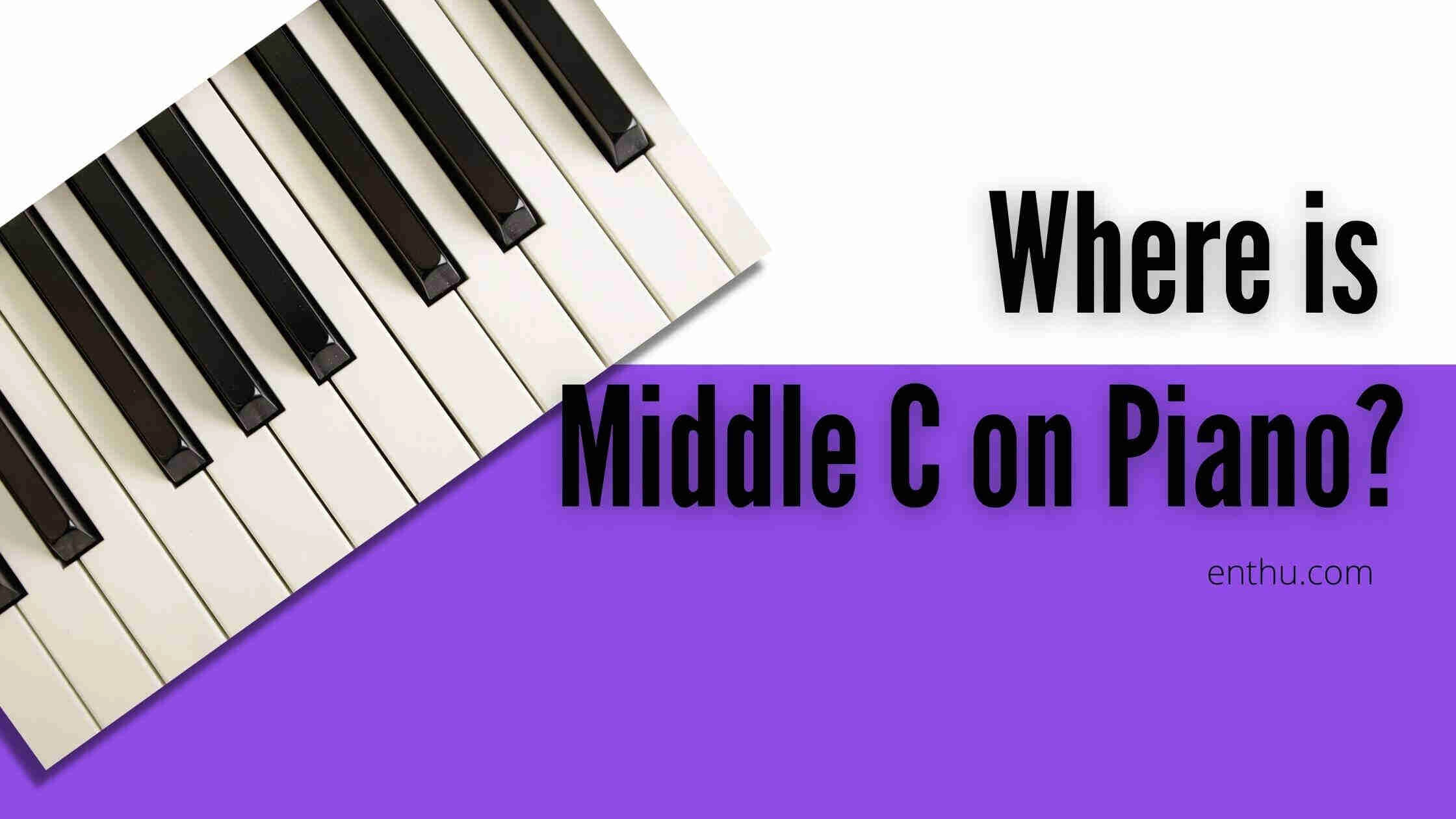
Sit in front of a piano, and look at the black keys pattern. The middle C is the beginning key of the 4th octave. Although it's not exactly at the middle of the keyboard, the C4 note is in proximity to the middle of the keyboard.
2. Note Recognition Note
Recognition is the oldest and most classical method of note recognition. This method includes memorizing all the notes from the grand staff.
Using mnemonics is the smartest way to remember all the notes. However, the note recognition method might seem difficult for beginners. It is suitable for intermediate players as the music notes repeat themselves in the eighth note after every octave.
Here are some examples of mnemonics to memorize notes: Treble Clef Lines (E-G-B-D-F): Every Good Boy Does Fine Treble Clef Space: FACE Bass Clef Lines (G-B-D-F-A): Great Beethoven’s Deafness Frustrated All Bass Clef Space (A-C-E-G): All Cows Eat Grass
3. Interval Recognition
It is a more instinctive method of learning all the notes. According to many pianists, this method helps you play notes faster than other methods.
Read

First, identify the first note using any of these methods above (Landmark Notes and Note Recognition). Once you get the note right, start playing by following the pattern in the sheet music diagram.
This method is the fastest of all note-recognition techniques, but there is a high chance of mistakes in pitch recognition.
Other Piano Guides


Conclusion
I know it seems overwhelming for now, but once you sit in front of the piano and start playing the notes manually, it will seem easier. Do not rush in to cover everything in a day.
Start slow and learn thoroughly. Practice till you make it perfect, and no one can stop you from becoming a great pianist.
If you are looking for all-around piano lessons, check out EnthuZiastic online piano classes Goodbye, have a great musical life ahead!
FAQs
1) What is the best way to learn how to play the piano?
You can choose the traditional method of learning if it suits you. There are various other methods of learning to play the piano: learning by the ear, self-learning, online classes. Whatever way you choose, make sure you learn to play by the ear, as it will help you in the long run.

2) How many keys are there on a piano?
Pianos come with a wide range of keyboards. Keys in pianos range from 61 to 108. A standard piano has 88 keys. Out of the 88 keys, 52 keys are white, and 36 are black.
A standard grand piano is divided into 7 full octaves. How can I practice more effectively and efficiently? Practice smart, not hard. Focus on music theory as well as practical playing. It will help you understand complex music compositions better.
Learn to read sheet music (treble clef and bass clef). Set a specific time in the day and sit for practice. Include everything from notes (remembering note names), chords, key signature, scales, and easy songs to make your practice sessions interesting.


Comments